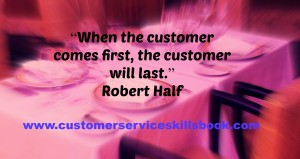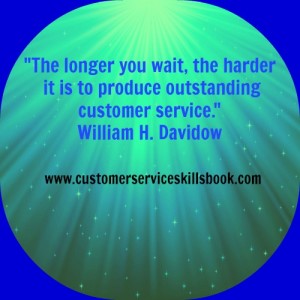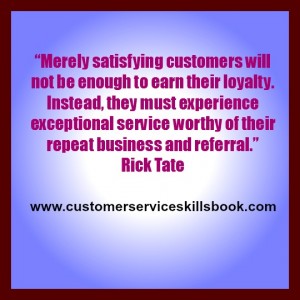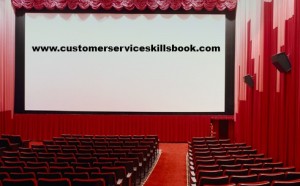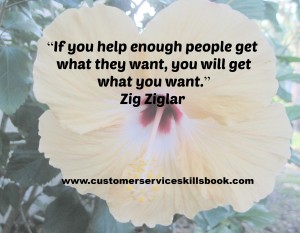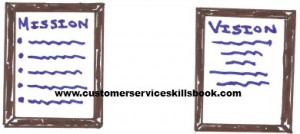Building Customer Relationships Is an Integral Part of Selling
Building customer relationships is an integral part of selling. If you are a customer service representative who deals with selling products or services, there is a difference between simply providing the information requested by a customer and building a lasting customer relationship in order to help make a sale. This is because you need to gather information to determine actual customer needs or why they are talking to you in the first place before you can effectively offer a specific product or service.
It is not unusual for a customer to ask for price early in a conversation. Several factors account for their actions. Many times it is because they have a history of a customer service representative who has taken advantage of them or not provided a competitive price. In other instances, they may have heard the phrase “buyer beware” and are acting cautiously to feel that they are in control of the interaction. Whatever their reason, you must respect that they are the customer and that you treat them with respect. You must act professionally in order to build trust and identify what best suits their needs. At the same time, you should not withhold the requested information from them.
The sales process is a lot like walking a tightrope. Too much deviation in one direction or another could mean your customer walks with the memory of a rude, controlling or uncooperative sales representative. On the other hand, taking the time to move forward slowly and carefully, can end in having the customer feel as if she or he guided the transaction and succeeded in getting a deal with which they are pleased.
The key to effectively interacting with customers during a sale is to ask appropriate open and closed-ended questions that guide the customer to explain what they need, want and expect. Without such information, you cannot properly negotiate with them to provide a price that is fair for them and your organization.
In situations where a customer asks for pricing upfront, he or she may simply be comparative shopping or trying to control the negotiation in order to get a lower price. Without first asking questions to determine your customer needs, you cannot appropriately respond to their request. This does not mean that you immediately say “no.” It means that you counter professionally with something like, “I’d be happy to share pricing information if you can just answer a question for me. How important are complete satisfaction and guaranteed satisfaction to you?” Once they respond to this, you can provide information about the product/service that you are offering and reinforce your organization’s commitment to customer satisfaction. before moving into price negotiation.
Simply giving pricing to a customer might cause them to say thank you and leave instead of allowing you to share the benefits of the product or service to the customer. Your goal should be to explain how the product or service features you are offering can help meet their needs and wants. You should also provide details about the quality, customer satisfaction, post-sales service, return policies, and other pertinent information that make you the preferred vendor or supplier for customers.
Building customer relationships is an integral part of selling. If you are a customer service representative who deals with selling products or services, there is a difference between simply providing the information requested by a customer and building a lasting customer relationship in order to help make a sale.
For additional techniques and strategies on how to build strong customer relationships, identifying customer needs, wants and expectations and delivering the best possible customer service, get a copy of Customer Service Skills for Success and Please Every Customer: Delivering Stellar Customer Service Across Cultures.



